Our team has been developing websites for many years and HubSpot CMS development quality assurance is one of the most important aspects of the development process. Our project management team and technical director love diving into newly developed modules and projects in an attempt to find bugs that need fixing or responsiveness and browser compatibility issues.
We use a comprehensive checklist for testing all active browsers on most major devices, manually testing responsiveness, reviewing design files in comparison to the “final” product, and testing module functionality for bugs. Through that process we use a few tools to ensure that nothing falls through the cracks. These tools include QA spreadsheets, BrowserStack to test browser compatibility, and perhaps our favorite collaboration and feedback tool, Pastel.
Pastel is a collaboration tool that allows internal teams, contractors, and clients to review marketing projects. We simply plug the project URL into usepastel.com and can quickly begin the review process with live browsing and the ability to easily click to add comments, update text, and collaborate for quick edits and updates. This is critical for us, since most of our team is remote.
For other teams looking for feedback collaboration software, or for agencies and companies that want to understand more about how a website should be reviewed for quality assurance, here’s a feature and benefit rundown of why we love Pastel for HubSpot CMS development feedback and communication for quality assurance testing.
It avoids the 75-email edit strings
According to a survey by Zippia.com, 80% of employees feel stressed because of ineffective company communication. Clearly no one likes inefficiency when it comes to communication, internally or externally.
One of the most difficult parts of managing communication surrounding website projects can be the multiple rounds of edits. If your developer or agency doesn’t have a simple way to communicate edits with a platform like Pastel, they can get caught in an endless string of back and forth messages.With no centralized feedback option, clients have to compile Google Docs, Powerpoint presentations, or those long strings of emails or Slack messages, which then need to be searched to find every single edit.
Not only does this increase the amount of time that a developer has to spend on updates, edits,and bug fixes, but sometimes a request can be overlooked, prolonging the process and sometimes even delaying the delivery of a completed site for review.
By having feedback centralized in Pastel, we avoid the extra communication, leaving our inboxes and Slack queue cleaner, our brains a little freer, and our development team that much more efficient. Keep in mind that not every client or employee likes to use new tools, so we still allow other feedback options, we just try to default to this to keep things organized.
It allows multiple people to leave feedback in one place.
Of course, it’s easy to assign a single point of contact as a final word on a website, but how often does something get lost in translation? We’ve encountered scenarios when the people at the top are dictating their wants and needs to a marketing director or manager, only for the company’s CEO to step in with their internal team and provide the feedback our teams needed all along. In order to avoid issues with too many cooks in the kitchen while also allowing all eyes in for review, Pastel is a great alternative.
With Pastel, you can hover over sections of the website and pin comments to each section. The comment is sticky and remains in place as you navigate through the rest of the document. This allows you to easily click on comments while reviewing areas of concern to save time in describing issues and identifying the issue in question for the development team receiving the feedback.
You can also @mention any user to quickly ping them with a question, notify them of a new edit, or request an update. You can even hold clients and internal teams accountable by turning off commenting after a “comment deadline.” (This is a favorite feature for us when projects are running on tight timeframes and we need to hold everyone to their deadlines.)
You can stay organized and keep up to date on progress.
Keeping comments organized can sometimes be a hassle, and if your development team has a huge list of edits and bug fixes, they may not know exactly how to prioritize them. You can mark items as high priority or categorize your edits using labels. Once a comment is labeled, the team can review it in real time and address high priority items or certain categories of issues, such as bug fixes, before wishlist items or additional feature functionality are addressed.
Pastel also allows for status updates so you can see how edits are progressing in real time. A status can be updated from Active to In Progress to In Review to Resolved by a team member. This keeps a project management team up to date and allows them to communicate timeframes with the client to manage expectations accordingly.
It offers “live” editing.
Because Pastel pulls from the website URL, it allows you to use the same canvas for multiple rounds of edits if you want. If you use a live website URL for feedback, once the code is changed, the edits will reflect on the same document, allowing the team to verify those changes and make additional suggestions if needed.
It integrates with other common marketing tools for seamless ticket or task creation.
We’ve spoken to the team at Pastel; they have a lot of great ideas about how they’ll continue to evolve the software. They’ve communicated that their intent is to build on the number of integrations they offer to make it easier for development teams to use Pastel. . They’ve also assured us that big things are on the horizon for the platform.
We asked Valentin Stakov, founder at Pastel, what the company’s focus was and what agencies and developers could expect from Pastel in the coming months. He said, "We're planning on improving our existing integrations to make them more robust, as well as building additional integrations. We're also focused on building out more tools to make it easier to communicate with your clients and to keep them updated on their projects."
For now, their website lists the following integrations here:
Asana
Monday
Trello
Adobe XD
Jira
Finding a tool with a forward-thinking team is important; we look forward to seeing what integrations these guys come up with in the future.
It saves you time with additional functionality.
Pastel has a few time-saving features as well.
Its interface allows you to easily add screenshots, upload files, and link URLs in the comments. If you want an image replaced on a web page, company file storage can sometimes take a bit to sort through.
Basic responsiveness tests are also a perk of Pastel. While we use real browsers when available and BrowserStack for full browser compatibility testing, the simple toggle on Pastel gives the client and other reviewers a way t to visualize what the website will look like on both mobile and desktop, allowing for more eyes on the process.
Another common activity during launch preparation is tweaking copy and headlines. While all our clients operating in HubSpot CMS have the flexibility to make updates to all content and headlines themselves, sometimes you need those perfect words to make a website look launch-ready.






